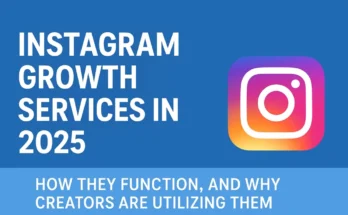The manufacturing sector is going digital faster than ever, and your website is often the first impression clients get. In 2025, outdated or cluttered sites won’t cut it. Manufacturing web design is evolving to combine sleek visuals, smooth navigation, and interactive features that showcase your products and expertise. A modern, purposeful website doesn’t just inform; it builds trust, drives leads, and sets you apart from competitors.
In this article, we will cover the top trends manufacturers need to know to stay ahead.
1. Interactive Product Visualization
Static product images are no longer enough. Manufacturers are increasingly using 3D models, interactive demos, and AR/VR experiences to let buyers explore products online. This approach is particularly valuable for complex machinery or custom-built equipment, where seeing details in action makes a huge difference.
Considering that 75% of consumers say a website’s design influences their perception of a company’s credibility, investing in visual interactivity can directly impact trust and conversions.
Key takeaways:
- Embed 3D models that users can rotate and zoom.
- Use AR to let users visualize products in their space.
- Highlight technical specifications dynamically alongside visuals.
2. Mobile-First, Responsive Design
More buyers are browsing on mobile devices. In industrial sectors, engineers and procurement managers often research products on tablets or smartphones while on the factory floor.
A mobile-first manufacturing web design ensures that navigation, forms, and visuals work flawlessly on any screen size. Google’s mobile-first indexing also makes responsive design a ranking factor, so it’s good for both UX and SEO.
Pro tips:
- Prioritize fast loading times and lightweight assets.
- Simplify menus and navigation for touch screens.
- Ensure product catalogs are easy to browse on small devices.
3. Minimalist, Functional Layouts
Industrial buyers want information fast. Cluttered websites with too many banners, pop-ups, or excessive text can frustrate users.
Minimalist layouts that focus on product clarity, process transparency, and actionable CTAs are winning. Think: clean sections, bold headlines, clear visuals, and concise copy.
Benefits:
- Improves readability and reduces bounce rates.
- Highlights key products and solutions without distractions.
- Supports faster page loading, which improves SEO.
4. Enhanced SEO Integration
SEO isn’t just about keywords; it’s about structuring content, metadata, and visuals to drive organic traffic. In 2025, manufacturing web design will prioritize SEO from the ground up.
Considerations:
- Optimize product pages with long-tail keywords related to your industry.
- Use schema markup for products, reviews, and company info.
- Ensure images are compressed and tagged with descriptive alt text.
- Build internal linking between product lines, services, and blog content.
A well-optimized site not only attracts more visitors but also positions your brand as a thought leader in your niche.
5. AI-Powered Personalization
Artificial intelligence is reshaping the buyer journey. AI-driven tools can track user behavior and deliver personalized content, product recommendations, or lead magnets.
For manufacturers, AI can:
- Recommend relevant products based on browsing history.
- Offer content or resources tailored to the user’s industry or role.
- Automate lead capture and follow-ups, integrating with CRM systems.
This level of personalization increases engagement, shortens sales cycles, and improves conversion rates.
6. Sustainability and Brand Storytelling
Buyers increasingly care about sustainability, ethics, and corporate responsibility. Web design that highlights green initiatives, certifications, or eco-friendly processes resonates more with industrial clients.
- Use dedicated pages for sustainability, manufacturing processes, and certifications.
- Share stories through videos or case studies to humanize your brand.
- Combine visuals with metrics, like energy savings or carbon footprint reductions.
This approach builds trust and distinguishes your manufacturing brand in a competitive market.
7. Accessibility and Compliance
Accessibility is also very important. Manufacturers must ensure their websites are usable by everyone, including people with disabilities. Accessibility improves UX, legal compliance, and search visibility.
Best practices:
- Use high-contrast text, scalable fonts, and keyboard-friendly navigation.
- Include alt text for images and captions for videos.
- Follow WCAG 2.1 guidelines for compliance.
Accessible design broadens your audience and reflects your brand’s professionalism.
8. Data-Driven Analytics Integration
Your website should be more than a static showcase; it’s a source of insights. Integrating analytics tools like Google Analytics, heatmaps, and CRM tracking allows manufacturers to understand user behavior, identify high-performing content, and optimize pages for conversions.
- Track form submissions, downloads, and clicks on product demos.
- Identify drop-off points in the buyer journey.
- Use insights to refine product pages, content marketing, and design elements.
9. Fast Loading, High-Performance Sites
Industrial buyers are busy, and slow websites cost leads. Performance optimization, like compressed images, lazy loading, and efficient hosting, is critical.
- Optimize images without losing quality.
- Use caching and CDNs to reduce load times globally.
- Minimize scripts and third-party plugins to avoid slowdowns.
A fast, reliable website improves both UX and search engine rankings.
10. Integration with Digital Marketing Tools
Finally, modern manufacturing web design must integrate seamlessly with marketing tools. This includes email marketing, social media, CRM platforms, and automation systems.
Benefits:
- Capture leads efficiently through forms and landing pages.
- Nurture leads with targeted campaigns based on website behavior.
- Measure ROI of digital initiatives directly from the website.
A website that supports marketing automation becomes a growth engine, not just a digital brochure.
Final Thoughts
Manufacturing websites in 2025 are moving beyond static design to become dynamic, user-centered, and highly functional tools. By focusing on manufacturing web design trends like interactive product visualization, mobile-first layouts, SEO integration, AI personalization, and sustainability storytelling, manufacturers can engage clients more effectively and drive measurable results.
The future is digital. If your website doesn’t reflect modern design trends, you risk falling behind competitors who are leveraging technology to win leads and build credibility. Investing in a website that’s fast, functional, and strategically optimized isn’t optional—it’s essential for growth in 2025 and beyond.



